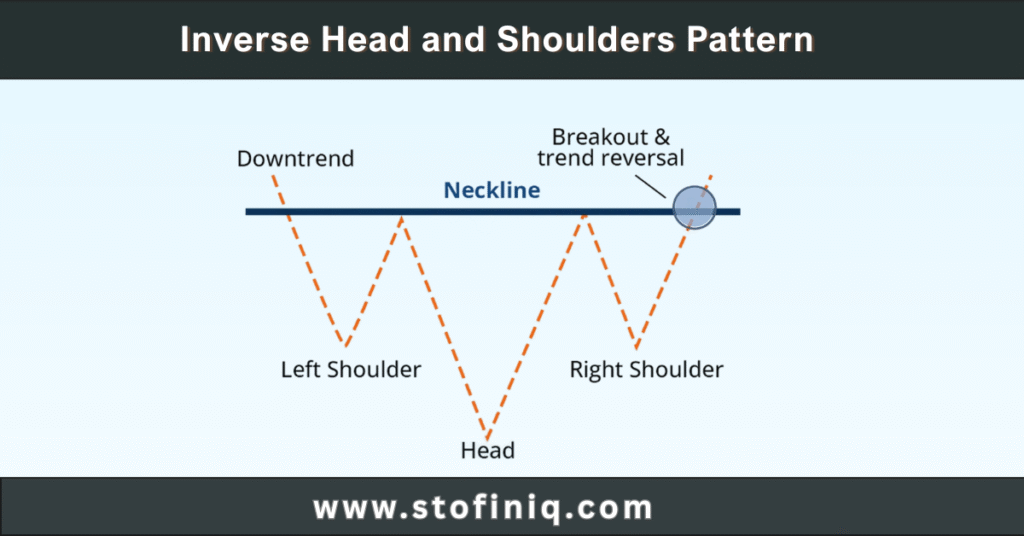
Support and resistance are one of the important concepts of technical analysis; these concepts are crucial in understanding the Nifty’s price movement.
Support means the price level where buying interest is strong enough to stop the price from falling anymore.
Resistance means the price at which selling pressure can stop a price from rising any further.
Key Takeaways
- Support serves as a floor whereby Nifty rebounds on the high buying demand.
It indicates that it is a level where traders perceive values and become willing to buy.
- Resistance behaves as a ceiling within which there is selling pressure, and Nifty retreats.
It is a place where market players may get profits or a change of direction.
- The greater the number of tests is given at a level, the more harmonious and sound it becomes.
- Regular, unbreakable touches make the difference psychologically.
The volume increases credibility as a high volume level of interest is near the protection/resistance.
It indicates that traders are not staying away at this price.
- Breakouts are an indication of change, and rejections validate the level of strength.
- An uptrend can be initiated by a breakout; a bounce is used to strengthen the levels.
What is support in Nifty trading? Explained in simple words
Definition:
Support is a price level at which the Nifty index tends to find buying interest strong enough to prevent the price from falling further.
Explanation:
You can think of support like a floor for Nifty. When the price falls and touches this level, many people start buying, so the price goes back up. This happens because traders feel the price is low enough to buy. If Nifty goes below this level, it might fall more, but usually, support helps it bounce back up.
Example of Support in Nifty Trading:
Let’s say Nifty has fallen to 19,300 a few times in the past, and each time it reached that level, it bounced back up. This shows that many traders start buying when Nifty touches 19,300, thinking it’s a good price. So, 19,300 becomes a support level.
If Nifty comes close to 19,300 again in the future, traders will watch it closely — if it holds and bounces, the support is still strong. But if it falls below 19,300, it may signal more downside.
What is support in Resistance in Nifty trading? Explained in simple words
Definition:
Resistance is the price level where the Nifty usually stops rising and starts to fall back down.
Explanation:
Resistance works just like how a ceiling works, for Nifty. When the price moves up and touches this level, many traders start selling, thinking the price is too high. Because of this selling, Nifty often comes down from the resistance level. If Nifty breaks above this level, it may go even higher, but until then, resistance is where the price struggles to rise.
Example of Resistance in Nifty Trading:
Imagine Nifty has gone up to 20,000 several times, but every time it reaches this level, it falls again. This means 20,000 is acting as a resistance.
Traders may expect Nifty to fall again if it reaches 20,000 — unless it breaks above, which could signal a new upward trend.
How Do Support and Resistance Work in Nifty Trading? (Step-by-Step)
- Price Moves Based on Demand and Supply:
The index of the Nifty moves upward when the buyers become more dominant, and it falls when the sellers become more active. Thus, there is a constant push and pull that creates natural points on the chart.
- Market Tests Price Zones Repeatedly:
After the time passes, the traders can notice that Nifty bounces back from certain lower points or it pulls back from certain highs These are the early signs that show support and resistance are forming.
- Support and Resistance Levels Are Identified:
When these turning points occur multiple times, traders mark them as key levels. They become psychological zones where price behaviour is likely to repeat.
- Traders React to These Levels:
When the prices approach the support or the resistance, most of the traders make decisions on whether to enter or exit the positions, which is based on the past reactions at these levels
- Breakouts or Reversals May Follow:
If the NIfy respects these levels, it may reverse. But if the momentum is strong, it might break the level, this could lead to the bigger price moves or also changes in the trends.
What is a Support Level?
This is the specific price zone where the Nifty tends to fall any further and sometimes start rising again. This happens because the buyers are stepping in at this point; they believe that the price is low and they can buy them.
Thus it acts lie the floor, and thus they are offered with a temporary stability during the downtrend. IF this level gets broken, it may move towards the further decline.
What is a Resistance Level?
The resistance level is the specific price zone where the Nifty most of the time stops rising and sometimes may reverse downward. Sellers become more active here, as they think that the price is too high to continue. Thus, it acts like a ceiling and holds back the upward momentum. If there is a strong breakout above the resistance, it may signal a new uptrend.
Are support and resistance reliable?
Support levels and resistance levels are important elements in technical analysis, but they are not always reliable. These levels would be made to work best when they depict consistencies in a given period and when affirmed by other market behaviours. Before making trade decisions, traders usually seek some indications that would enhance the validity of these zones.
Touch Count
The greater the number of times a support or resistance level resists entry and gives way, the more will it be reliable. A price level which has been penetrated a number of times signifies that traders identify and respond to it steadily.
Trading Volume
When the trading volume is higher around the level of support or resistance, the stronghold of the level is often confirmed. When bounce/rejection occurs at a higher volume, it indicates the fact that there is real interest buying or selling at that price.
Time Period
Easier to rely upon are the levels that are determined based on longer trends, such as the daily or weekly charts. It is so due to the wider agreement between traders and the greater market importance of these opinions.
Price Behavior
Reversals, rejections or consolidations around a zone are a sign of respect to the zone. When the price responds in a strong way whenever it nears the area, the level develops credibility.
Trend Context
In an uptrend, the support levels are more credible and in a downtrend, so are the resistance levels. Participation in the overall market trend raises the chance of the level remaining.
Trading Strategy: Nifty Resistance Levels and Support Levels
In modern trading, it is vital to familiarise oneself with Nifty resistance levels and support levels in an effort to develop a successful trading strategy in terms of both intraday and positional trading. These levels are psychological boundaries at which there is either a price pause or reversal, at which traders can enter or exit the market.
Keeping a track of resistance and support levels today, is critical when the index is at a crucial range following oscillation. An upward bounce on present support may have a bullish demand, whereas a collapse would lead to a channel of lower levels.
In the outlook, chances are high that traders will face possible movements around Nifty support and resistance levels tomorrow. The ability to predict market response to these zones can give a technical advantage, especially in a cumulative tutorial like volume analysis or price action indicator.
How to find the resistance and support level as a beginner?
As a novice, identifying support and resistance level all boils down to determining the major points at which stock, index (such as Nifty), or any other asset is likely to reverse or hesitate. Such levels serve as the psychological barriers, in a sense, the price cannot collapse further since there is support and it cannot rise further since there is resistance.
This is a newbie-friendly way of finding them:
1. A Line Chart or a Candlestick Chart
First, use a daily chart. Take a step back and view everything in terms of weeks or months. Line charts make it easier to identify the obvious turning points, whereas candlestick displays deeper price action.
2. Search Swing Highs and Lows
Support is created in the former swing lows (the price went down and then went up).
The resistance develops at swing highs (prices increase and drop).
Once a price level has caused the stock to bounce back more than once then it is probably a support.
In case the price finds it hard to break a particular mark consistently, then that amounts to resistance.
3. Count the touches
The stronger the price level is, the more times it has been tested but not broken.
When a stock hits 1800 and dips thrice, then it is a rigid resistance.
4. Inspect volume
Heavy volume around support or resistance shows power.
When the price increases with a great volume after reaching a level of support, this level becomes credible.
When the price drops with low volume using a support, it can be a false signal.
5. Dynamic thematic support/resistance Moving Averages
Popular ones such as 50-day or 200-day moving averages will either become support in an uptrend or act as resistance in a down trend.
6. Psychological Investment Notice and Psychological Levels
It is also common knowledge that traders tend to place orders at or around round figures (such as 2000, 15000, etc.), and naturally, they do create support/resistance areas.
7. Take Advantage of Indicators such as Fibonacci Retracement
This is somewhat in the middle; however, you may apply it to seek possible reversal points. The levels 38.2, 50 and 61.8 are usually accompanied by a powerful support/resistance.
Example:
In case Nifty recovered to about 22,000 several times in the recent past, it becomes a support level.
Resistance is what you get when it does not manage to break above 23,000.
FAQ (frequently asked question)
If there is a breach in the resistance level, the price will most probably go higher, which can potentially establish a new resistance level at a higher price point. The breached resistance level may now act as a new support level, because buyers who missed the initial breakout may seek to enter the market at this now-tested level.
Support refers to the level of price at which a stock is likely to stop declining since buyers are more involved in buying it, thus forming a floor. The price has a tendency to cease increasing at resistance as it is faced with pressure to sell, hence behaving as a ceiling.
The best way to find support and resistance is by looking at past price levels where the stock has reversed before. Indicators like moving averages, pivot points, and Fibonacci retracements can help spot these zones. But for beginners, just watching where prices often bounce or get rejected is a simple and effective method.
Well done on completing the blog!
Hope this was informative and you decided to read more on the share market, share trade strategies, mutual fundsand all that concerns personal finance, do remember to follow StofinIQ on a regular basis to get regular updates, tips and information.
I left my engineering job to follow my true passion writing and research. A passionate explorer of words and knowledge, I find joy in diving deep into topics and turning rich, insightful research into compelling, impactful content. Whether it’s storytelling, technical writing, or brand narratives, I believe that the right words can make a real difference.


Helpful information. Lucky me I discovered your web site by chance, and I
am surprised why this coincidence did not came about in advance!
I bookmarked it.